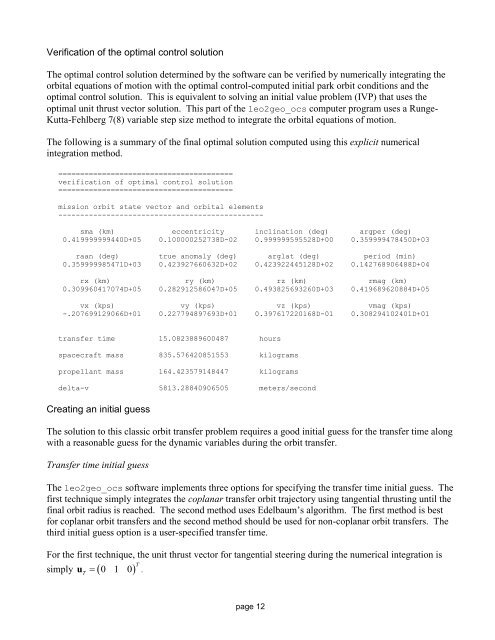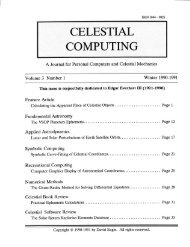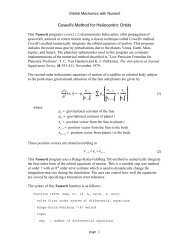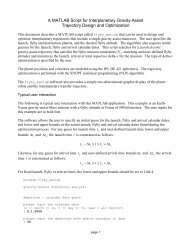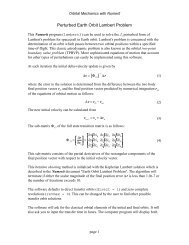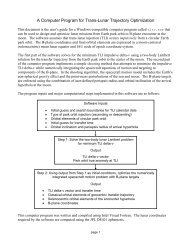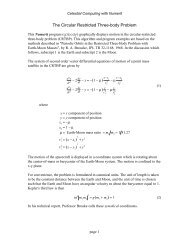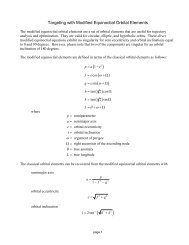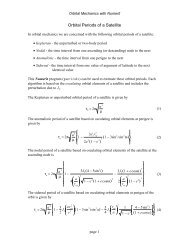PDF document - Orbital and Celestial Mechanics Website
PDF document - Orbital and Celestial Mechanics Website
PDF document - Orbital and Celestial Mechanics Website
You also want an ePaper? Increase the reach of your titles
YUMPU automatically turns print PDFs into web optimized ePapers that Google loves.
Verification of the optimal control solutionThe optimal control solution determined by the software can be verified by numerically integrating theorbital equations of motion with the optimal control-computed initial park orbit conditions <strong>and</strong> theoptimal control solution. This is equivalent to solving an initial value problem (IVP) that uses theoptimal unit thrust vector solution. This part of the leo2geo_ocs computer program uses a Runge-Kutta-Fehlberg 7(8) variable step size method to integrate the orbital equations of motion.The following is a summary of the final optimal solution computed using this explicit numericalintegration method.========================================verification of optimal control solution========================================mission orbit state vector <strong>and</strong> orbital elements-----------------------------------------------sma (km) eccentricity inclination (deg) argper (deg)0.419999999440D+05 0.100000252738D-02 0.999999595528D+00 0.359999478450D+03raan (deg) true anomaly (deg) arglat (deg) period (min)0.359999985471D+03 0.423927660632D+02 0.423922445128D+02 0.142768906488D+04rx (km) ry (km) rz (km) rmag (km)0.309960417074D+05 0.282912586047D+05 0.493825693260D+03 0.419689620884D+05vx (kps) vy (kps) vz (kps) vmag (kps)-.207699129066D+01 0.227794897693D+01 0.397617220168D-01 0.308294102401D+01transfer time 15.0823889600487 hoursspacecraft mass 835.576420851553 kilogramspropellant mass 164.423579148447 kilogramsdelta-v 5813.28840906505 meters/secondCreating an initial guessThe solution to this classic orbit transfer problem requires a good initial guess for the transfer time alongwith a reasonable guess for the dynamic variables during the orbit transfer.Transfer time initial guessThe leo2geo_ocs software implements three options for specifying the transfer time initial guess. Thefirst technique simply integrates the coplanar transfer orbit trajectory using tangential thrusting until thefinal orbit radius is reached. The second method uses Edelbaum’s algorithm. The first method is bestfor coplanar orbit transfers <strong>and</strong> the second method should be used for non-coplanar orbit transfers. Thethird initial guess option is a user-specified transfer time.For the first technique, the unit thrust vector for tangential steering during the numerical integration isu 0 1 0 T.simply T page 12


